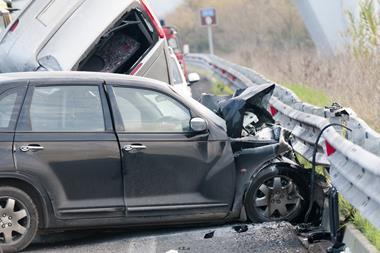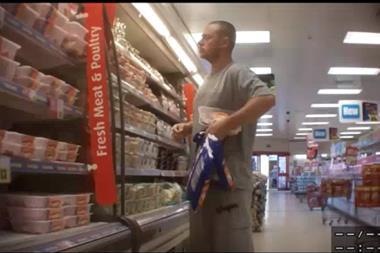Mark Hudson, head of counter fraud at Horwich Farrelly speaks to head researcher at Insurance Times, Savan Shah to talk through what techniques should be adopted in the fight against fraud
Is the fight against holiday sickness fraud proving to be successful?
In a word, yes. However, there is still more to be done.
2017 saw bogus holiday sickness claims reach an all-time high, reportedly costing the travel sector £50 million per year[1], with ABTA members seeing an increase of over 500% in customers claiming that they had fallen ill on holiday.[2]
The same report also highlighted how 1 in 5 adults had been approached whilst on holiday to make a compensation claim for holiday sickness.
The problem was evident, as claims management companies (CMCs) involved were motivated to ‘farm’ claims because of the high legal costs that could be recovered in successful cases.

Prompted by the growing size of the problem, Horwich Farrelly brought its wealth of claims fraud experience to the holiday fraud sector, working with the travel industry to investigate potentially fraudulent claims, as well as provide a robust defence for any cases taken to court.
As a result, the business has successfully defended more than 2,700 claims as well as tackling professional ‘enablers’, including doctors, solicitors and CMCs that were behind the increase in claims volumes.
Regulation has also come to the aid of the sector. In May 2018, the Government introduced new rules for gastric illness claims which removed this significant cost incentive for claims management companies within this particular market.
The combined impact of a more robust defence against spurious claims and improved regulation has meant that the ‘opportunity’ has significantly diminished. In January 2018 the Ministry of Justice (MoJ) asked CMCs to report if they handled holiday sickness claims.
140 CMCs declared that they continue to handle holiday sickness claims - a reduction from 225 in its previous survey in August 2017.[3] There has also been a significant reduction in claims volumes across the sector generally.
A zero tolerance approach to fraud is the only way forward. It is, therefore, important that the travel industry continues to fight dishonest claims.
If fraudsters and ‘professional enablers’ are not able to operate as easily in the motor claims and holiday sickness sectors, what other areas might they target?
The rule changes in the motor claims and holiday sickness sectors have significantly reduced the amount of costs that claimant solicitors and ‘professional enablers’ can recover, and there are plans to reduce these motor claims costs further still.
Tighter regulation has forced these groups to look for new revenue streams. In terms of gastric illness claims, we expect to see an increase in the number of fraudulent claims pursued against cruise companies as the cost rules are slightly different here.
We have also already seen an increase in fraudulent slip & trip claims as well as dishonest claims associated with property damage, as these offer the opportunity to recover higher levels of costs.
As a business we have a strong process in place to identify and combat new fraud trends, and we work with insurers proactively in order to ensure that they have the correct strategies in place ahead of time.
How much of a role does social media play when defending fraudulent claims?
You often see stories in the media about claimants that have been caught out because of incriminating posts on their social media profiles. The reality is, however, that this type of evidence forms only a small part of the investigations into fraudulent claims.
A claims handler may find helpful evidence through social media investigations, but it must be carefully considered alongside all of the other evidence gathered. Whilst social medial evidence plays an important part in some cases, the vast majority of the fraudulent claims that Horwich Farrelly defends are defeated without it.
Is there such thing as a typical fraudster?
Absolutely not and, unless you have a very clear strategy in place, that is what makes identifying fraudsters so challenging - and rewarding. Horwich Farrelly has secured dishonesty findings against all kinds of people from many different professions and backgrounds.
For example, the case of Vishal Randive v Aviva Insurance that Horwich Farrelly defended on behalf of Aviva saw a well-paid IT consultant fraudulently claim he had suffered from extreme whiplash injuries following a minor motor collision. After our investigations proved otherwise, the claimant was found in contempt of court and ordered to pay costs of over £48,000.
There may have been a time when it was possible to “profile” a typical fraudster, however this is no longer the case. This is why it is important for insurers to have a robust strategy in place to demonstrate how fraud of any shape and size will not be tolerated.
How is technology helping in the fight against fraud?
Technology will continue to play its part in identifying trends in data which, in turn, inform fraud defence strategies. Improved technology has also allowed the industry to automate investigations that were entirely manual, saving time and money.
Developments in technology, such as automated braking, telematics and driverless cars will also reduce the number of fraudulent motor claims; however, the fight against fraud, which is rapidly spreading into other areas, can only be won if the trends identified and evidence gathered is properly used by the lawyers handling the claims.
Insurers must adopt a zero tolerance approach to fraudulent claims in order to ensure that they don’t become a target for dishonest claimants and their enablers.
Source
[1] http://www.mirror.co.uk/news/uk-news/spanish-hotel-owners-say-brits-10335522
[2] https://www.abta.com/news/1-5-brits-have-been-approached-about-making-compensation-claim-holiday-illness
[3]https://assets.publishing.service.gov.uk/government/uploads/system/uploads/attachment_data/file/722649/CMR_Annual_Report_2017-18.pdf
Hosted by comedian and actor Tom Allen, 34 Gold, 23 Silver and 22 Bronze awards were handed out across an amazing 34 categories recognising brilliance and innovation right across the breadth of UK general insurance.





















































No comments yet